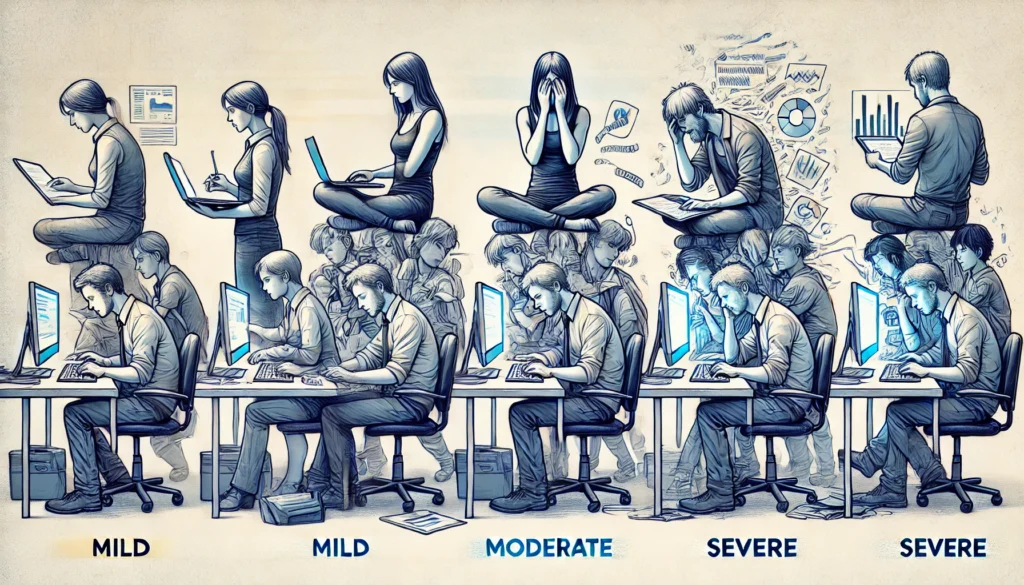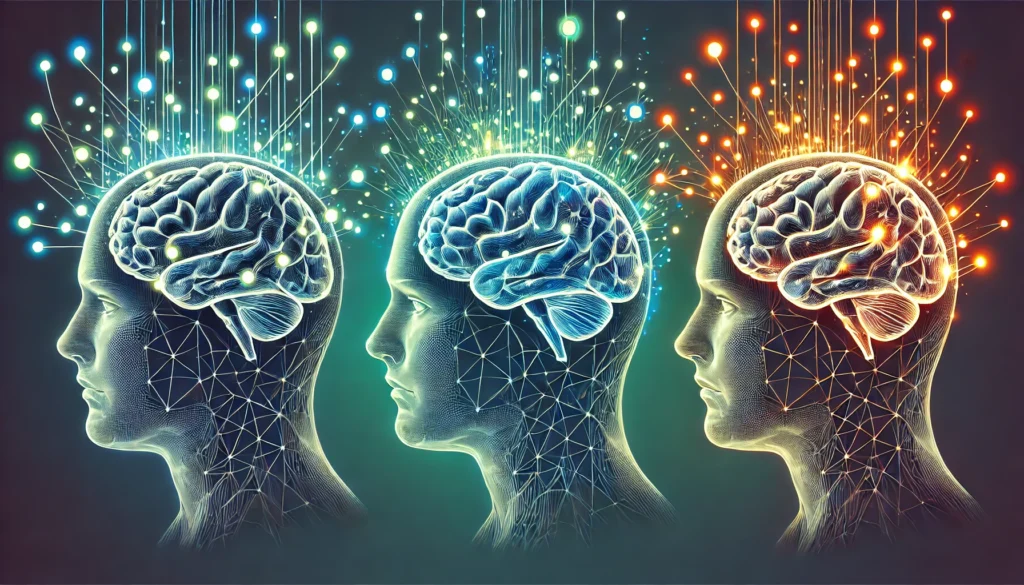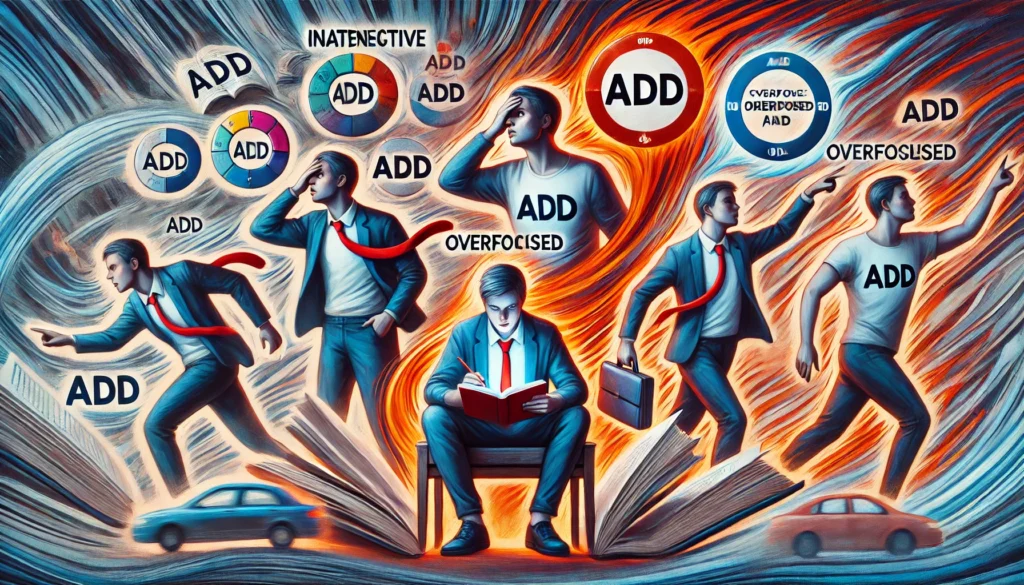Attention Deficit Disorder (ADD) and its counterpart, Attention Deficit Hyperactivity Disorder (ADHD), are complex neurodevelopmental disorders affecting both children and adults. Despite their commonality, understanding their various forms and levels of severity remains a challenge for many. This comprehensive overview delves into the different types of ADD/ADHD, the spectrum of severity, and the implications for treatment and management.
You may also like: Enhancing Concentration: Strategies for ADHD
Understanding the Spectrum of Attention Deficit Disorders
ADD and ADHD are often used interchangeably, yet they encapsulate a broad spectrum of symptoms and behaviors. Traditionally, these conditions have been categorized based on the predominant symptoms: inattentiveness, hyperactivity, and impulsivity. Understanding the nuances of these disorders requires a closer look at the distinct types.
Defining ADD and ADHD
ADD and ADHD share core symptoms but differ mainly in the presence of hyperactivity. ADD primarily involves inattentiveness without the hyperactive behaviors seen in ADHD. This distinction is crucial for accurate diagnosis and treatment, as it influences the management strategies employed for each condition. Historically, ADD was the term used more frequently, but ADHD is now recognized as the more comprehensive term that includes hyperactivity.
Symptom Overlap and Misdiagnosis
The overlapping symptoms of ADD and ADHD can often lead to misdiagnosis. Symptoms such as inattention can be mistaken for laziness or lack of motivation. Hyperactivity can be perceived as behavioral issues rather than a neurological condition. This misinterpretation underscores the importance of a thorough diagnostic process that considers the individual’s behavior across different contexts and over time.
The Role of Neurological Function
The neurological basis of ADD and ADHD is a critical area of study. Both disorders are linked to differences in brain structure and function, particularly in areas related to attention regulation and impulse control. Neuroimaging studies have revealed alterations in the prefrontal cortex and basal ganglia, which are areas associated with executive functions. Understanding these neurological underpinnings can aid in developing targeted interventions.

The Six Types of ADD
ADD and ADHD are often broken down into six primary types, each with its unique characteristics:
Classic ADD
Classic ADD is the most well-known form, characterized by inattention, distractibility, and procrastination. Individuals with classic ADD often find it challenging to complete tasks and may struggle with time management. They are easily distracted by external stimuli, which can lead to unfinished projects and difficulty in maintaining focus in conversations or activities.
Inattentive ADD
Inattentive ADD is marked by struggles with attention and focus without the hyperactive behavior. People with this type may appear daydreamy or forgetful, often losing track of tasks or belongings. This form of ADD is more common in adults, who may have developed coping mechanisms that mask hyperactive tendencies seen in childhood, making it harder to diagnose.
Overfocused ADD
Overfocused ADD is characterized by excessive worrying, obsessive thoughts, and difficulty shifting attention. Individuals with this type often fixate on certain thoughts or behaviors, making it hard to adapt to new situations or changes in routine. This can lead to stubbornness and difficulties in personal and professional relationships as their rigid thinking can create conflicts.
Temporal Lobe ADD
Temporal Lobe ADD involves memory problems, learning issues, and emotional instability. Those affected may experience bouts of anger or sadness that seem disproportionate to the situation. Memory lapses and learning difficulties can make academic and work environments challenging, leading to frustration and a lower quality of life if not properly managed.
Limbic ADD
Limbic ADD often presents with depression, low energy, and social withdrawal. People with this type may seem disinterested in activities they once enjoyed and can exhibit a persistent low mood. The emotional challenges associated with limbic ADD often require a combination of therapeutic approaches to address both the neurological and psychological aspects.
Ring of Fire ADD
Ring of Fire ADD exhibits extreme mood swings, anger outbursts, and hyperactivity. This type is often described as being on a rollercoaster of emotions, with individuals experiencing intense highs and lows. The “ring of fire” refers to the heightened activity seen in the brain’s cortical areas, leading to the explosive and unpredictable behavior characteristic of this type.
Levels of ADHD Severity
The severity of ADHD symptoms can vary significantly, ranging from mild to severe. The severity influences the level of impairment in daily functioning and the intensity of required interventions.
Mild ADHD
Mild ADHD symptoms are present but do not significantly hinder daily life. Individuals with mild ADHD can often manage their symptoms with minimal intervention. They might require organizational tools or periodic counseling to maintain productivity and focus, but they generally function well in various environments.
Moderate ADHD
Moderate ADHD symptoms are more pronounced and affect social and work situations. People with moderate ADHD may struggle with meeting deadlines, maintaining relationships, and managing stress. They often benefit from a combination of medication and behavioral therapy to help them navigate the demands of daily life more effectively.
Severe ADHD
Severe ADHD symptoms are persistent and severely impact multiple areas of life. Individuals with severe ADHD may experience significant challenges in academic performance, employment stability, and personal relationships. Intensive interventions, including comprehensive therapy programs and consistent medication management, are often necessary to support these individuals.

Historical Context and Evolution of ADD/ADHD Understanding
Understanding the evolution of ADD/ADHD diagnosis and treatment provides insight into the current landscape of these disorders. Historically, ADD was first recognized in the early 20th century, but it wasn’t until the 1980s that ADHD became a widely recognized term. The shift in terminology reflects a deeper understanding of the disorder’s complexity and the need for nuanced diagnostic criteria.
Early Recognition and Misconceptions
In its early recognition, ADD was often misunderstood, with affected individuals labeled as troublemakers or lacking discipline. This misunderstanding led to stigmatization and inadequate support for those with the disorder. Over time, as research progressed, the medical community began to understand that these behaviors were symptoms of a neurological condition rather than character flaws.
The Impact of Societal Changes
Societal changes have played a significant role in the evolution of ADD/ADHD understanding. Increased awareness and advocacy have shifted public perception, reducing stigma and promoting acceptance. The advent of digital technology and changes in educational practices have also influenced how symptoms are identified and managed, providing new tools and strategies for supporting individuals with ADD/ADHD.
Advances in Diagnostic Criteria
The diagnostic criteria for ADD/ADHD have evolved significantly, reflecting advances in scientific understanding. Initially, the focus was primarily on hyperactivity, but as research expanded, the criteria were refined to include a broader range of symptoms. This refinement has led to more accurate diagnoses, enabling tailored interventions that address the specific needs of individuals.
Are There Different Types of ADD?
The question of how many types of ADD exist is common. While the six types outlined above are the most recognized, the field of neuropsychology continues to explore whether more subtypes might exist, reflecting the diverse manifestations of the disorder.
Exploration of Subtypes
The exploration of additional subtypes of ADD is ongoing. Researchers are examining genetic, environmental, and neurological factors that might contribute to the diversity in symptom presentation. Understanding these factors could lead to the identification of new subtypes, offering even more personalized approaches to treatment and management.
The Role of Comorbid Conditions
Comorbid conditions can influence how ADD manifests in individuals. Conditions such as anxiety, depression, and learning disabilities can overlap with ADD symptoms, complicating diagnosis and treatment. By recognizing the presence of comorbid conditions, healthcare professionals can develop more comprehensive treatment plans that address all aspects of an individual’s mental health.
Individual Variability in Symptoms
The variability in ADD symptoms underscores the importance of a personalized approach to diagnosis and treatment. Factors such as age, gender, and lifestyle can influence how symptoms present and affect daily life. By considering these individual differences, healthcare providers can offer more effective and tailored interventions.
Current Trends in Diagnosis and Treatment
The diagnosis of ADD/ADHD has become more refined over the years, with healthcare professionals employing a combination of behavioral assessments, questionnaires, and interviews to accurately identify the disorder. The recognition of adult ADHD has been one of the significant shifts in recent years, acknowledging that the disorder does not simply resolve with age.
Diagnostic Tools and Techniques
Modern diagnostic tools and techniques for ADD/ADHD have greatly improved accuracy. Comprehensive assessments now include input from multiple sources, such as teachers, family members, and the individuals themselves. This holistic approach ensures a more complete understanding of how symptoms manifest in different environments and helps rule out other potential causes of the behaviors observed.
The Importance of Early Detection
Early detection of ADD/ADHD is crucial for effective management and improved outcomes. Identifying the disorder in childhood allows for early intervention, which can significantly enhance academic performance, social skills, and self-esteem. Pediatricians and educators play a vital role in recognizing early signs and referring children for appropriate evaluations.
The Rise of Adult ADHD Recognition
The recognition of adult ADHD has transformed the field, acknowledging that symptoms can persist into adulthood. Many adults who were undiagnosed as children may continue to struggle with attention-related issues that impact their careers and relationships. Adult ADHD diagnosis involves understanding the individual’s childhood history and current challenges to provide effective treatment strategies.
Treatment Options
Treatment for ADD/ADHD is multifaceted, often involving a combination of medication, behavioral therapy, and lifestyle modifications. Stimulant medications, such as methylphenidate and amphetamines, remain the most common pharmacological treatments, yet non-stimulant options like atomoxetine provide alternatives for those who cannot tolerate stimulants.
Pharmacological Interventions
Pharmacological interventions for ADD/ADHD focus on balancing neurotransmitters in the brain to improve attention and reduce impulsivity. Stimulant medications are highly effective for many, but they can come with side effects such as insomnia or appetite loss. Non-stimulant medications offer an alternative with a different side effect profile, making them suitable for individuals who experience adverse reactions to stimulants.
Behavioral Therapies
Behavioral therapies are a cornerstone of ADD/ADHD treatment, particularly for children. Cognitive-behavioral therapy (CBT) helps individuals develop coping strategies to manage symptoms and improve functioning in social and academic environments. Social skills training is also beneficial, helping individuals learn how to interact appropriately with peers and build meaningful relationships.
Lifestyle Modifications
Lifestyle modifications can complement traditional treatment approaches for ADD/ADHD. Regular exercise, a balanced diet, and adequate sleep are essential components of a healthy lifestyle that can improve concentration and reduce hyperactive behavior. Mindfulness practices, such as meditation and yoga, have also been shown to enhance focus and emotional regulation, providing additional tools for managing symptoms.

Future Implications and Considerations
The future of ADD/ADHD research holds promising implications for more personalized and effective treatments. As our understanding of the brain’s role in these disorders deepens, there is potential for breakthroughs in nootropics and other supplements that target specific neurological pathways to enhance cognitive function.
Advances in Neurological Research
Advances in neurological research are paving the way for novel treatments for ADD/ADHD. Scientists are exploring the use of neurofeedback and brain stimulation techniques to directly influence brain activity. These approaches aim to enhance cognitive function and reduce symptoms by training the brain to operate more efficiently.
The Role of Nootropics
Nootropics, or cognitive enhancers, are gaining attention as potential adjuncts to traditional ADD/ADHD treatments. These supplements aim to improve memory, focus, and mental clarity by supporting brain health. While research is still in its early stages, nootropics may offer additional options for individuals seeking to optimize their cognitive performance.
Integration of Technology
The integration of technology in treatment offers innovative approaches to therapy and symptom management. Digital therapeutics, such as apps and online platforms, provide structured programs that guide individuals through exercises designed to improve attention and self-regulation. Virtual reality experiences are also being explored as immersive tools for practicing social skills and reducing anxiety.
Practical Advice for Managing ADD/ADHD
Managing ADD/ADHD requires a holistic approach that encompasses both medical interventions and lifestyle adjustments. Here are some practical tips:
Create Structure
Establishing routines and setting clear expectations can help manage symptoms, particularly for children. Consistent schedules provide a sense of stability and predictability, reducing anxiety and improving focus. Visual schedules and checklists can be effective tools for reinforcing routines and helping individuals stay on track with their responsibilities.
Use Tools and Reminders
Organizational tools, such as planners and apps, can aid in managing time and tasks. Digital reminders and alarms can prompt individuals to initiate tasks and maintain focus throughout the day. By breaking larger tasks into smaller, manageable steps, individuals can avoid feeling overwhelmed and increase their productivity.
Promote Physical Activity
Regular exercise has been shown to improve concentration and reduce hyperactive behavior. Activities like team sports, dance, or martial arts can provide both physical and social benefits, encouraging discipline and teamwork. Exercise stimulates the release of neurotransmitters that enhance mood and focus, making it a valuable component of ADD/ADHD management.
Focus on Nutrition
A balanced diet, rich in omega-3 fatty acids and low in sugar, may support cognitive health. Nutrient-dense foods like fruits, vegetables, whole grains, and lean proteins provide the necessary fuel for optimal brain function. Avoiding processed foods and artificial additives can also help reduce hyperactivity and improve overall well-being.
Conclusion
ADD and ADHD are multifaceted disorders that require a comprehensive understanding of their types and severity levels. As research continues to evolve, so too will the strategies for diagnosis and treatment, offering hope for those affected by these conditions. By staying informed and adopting a holistic approach to management, individuals with ADD/ADHD can lead fulfilling and productive lives.
This overview serves as a guide to understanding the complexity of ADD and ADHD, empowering healthcare professionals, individuals, and their families with the knowledge needed to navigate this challenging landscape.
Further Reading:
Attention-Deficit / Hyperactivity Disorder (ADHD) in Children
Identifying and Treating the Seven Types of ADD/ADHD
ADD vs. ADHD Symptoms: 3 Types of Attention Deficit Disorder
Important Note: The information contained in this article is for general informational purposes only, and should not be construed as health or medical advice, nor is it intended to diagnose, prevent, treat, or cure any disease or health condition. Before embarking on any diet, fitness regimen, or program of nutritional supplementation, it is advisable to consult your healthcare professional in order to determine its safety and probable efficacy in terms of your individual state of health.
Regarding Nutritional Supplements Or Other Non-Prescription Health Products: If any nutritional supplements or other non-prescription health products are mentioned in the foregoing article, any claims or statements made about them have not been evaluated by the U.S. Food and Drug Administration, and such nutritional supplements or other health products are not intended to diagnose, treat, cure, or prevent any disease.


